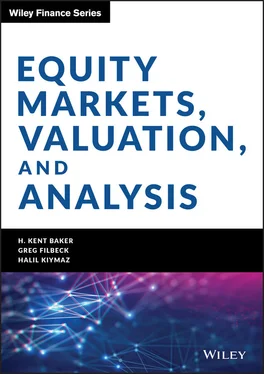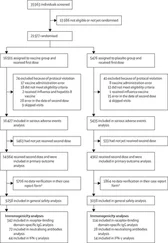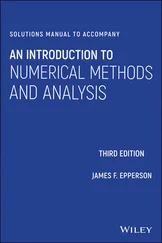Zhao Wangis an Assistant Professor of Finance at the Capital University of Economics and Business in Beijing, China. Previously, Professor Wang was a quantitative analyst at a capital management company in New York and focused on mutual funds and hedge funds of funds. His research interests include capital market anomalies, analysts, and executive compensation. He received a BS in finance from Tianjin University of Finance and Economics, an MS in finance from Hofstra University, and a PhD in finance from the University of Rhode Island.
PengCheng (Phil) Zhu, CFA, is an Associate Professor of Finance at the School of Business, University of San Diego. His research primarily focuses on corporate mergers and acquisitions, top executives, and emerging markets. He has published in leading business journals including Administrative Science Quarterly , Strategic Management Journal , Journal of Operations Management , Review of Accounting Studies, and Journal of Corporate Finance . Before joining the faculty at the University of San Diego, Professor Zhu taught at the University of the Pacific and Carleton University. He also worked as a business analyst in a global management consulting firm in Canada. He holds a PhD in finance from Carleton University.
CHAPTER 1 Equity Markets, Valuation, and Analysis: An Overview
H. Kent Baker
University Professor of Finance, Kogod School of Business, American University
Greg Filbeck
Director and Samuel P. Black III Professor of Finance and Risk Management, Black School of Business, Penn State Behrend
Halil Kiymaz
Bank of America Professor of Finance, Crummer Graduate School of Business, Rollins College
The earliest activity resembling a stock market system took place in the late thirteenth century in Antwerp, which served as the commercial center of Belgium. The history of equity markets dates back to the early seventeenth century with the launch of the Amsterdam Exchange. In 1602, the Dutch East India Company (VOC) became the first company to continuously trade. Although the creation of the London Stock Exchange (LSE) was in 1801, restrictions on companies issuing shares in Britain did not occur until 1825, which limited the effectiveness of the LSE. The New York Stock Exchange (NYSE) was formed in 1817 and quickly became the center of U.S. trade. Electronic trading debuted in 1971 with the creation of the NASDAQ market.
World equity markets have grown steadily since the 1980s. For example, world market capitalization of listed companies reached $79.121 trillion in 2017 from a low of $2.501 trillion in 1980 (World Bank 2018). During this period, it fluctuated dramatically, declining almost 50 percent during the global financial crisis of 2007–2008. Among the world stock exchanges, 16 have a market capitalization greater than $1 trillion, such as the NYSE, NASDAQ, LSE, Deutsche Böerse, Euronext, and Shanghai Stock Exchange. These 16 exchanges account for 87 percent of global market capitalization. North America leads other regions with a market capitalization of more than $28 trillion, representing 41 percent of the world total (Visual Capitalist 2016; World Federation of Exchanges 2019).
What is an equity market, and why is it important? An equity market is a market in which firms issue stocks to fund their operations. After issuance, investors trade shares on exchanges and over-the-counter (OTC) markets. Equity markets are an important part of a country's economy. Their primary function is to support the growth of business and industry by channeling funds from savers to firms. These markets not only provide firms with an opportunity to access capital and raise funds to grow their business but also give investors a chance to become shareholders.
Equity markets also serve the role of a common platform for the buyers and sellers of these listed public stocks. They can also include private stocks traded through the OTC market. Common and preferred stocks constitute the two main types of stock. Common stock represents residual ownership in a company. Preferred stock is a hybrid security that typically lacks voting rights but gives its shareholders a prior claim to receiving dividends before common stockholders. Companies may also create different classes of stocks to customize voting rights. For example, Class A shareholders may have multiple voting rights for each share, while second-class B shares may have only one vote per share.
How are activities of the equity market tracked? Overall, market changes over time can be tracked by using market indices. A market index is a weighted average of many stocks, which is computed using the prices of the stocks included in the index. The oldest U.S. stock market index – the Dow Jones Industrial Average (DJIA) – originated in 1885 as the Dow Averages. The DJIA consists of 30 large, influential U.S. companies. Another widely used market index – the Standard & Poor's 500 index – represents 500 large U.S. stocks. Investors can use these stock indices, as well as many others, to follow market trends and compare their portfolio performance.
Equity markets allow investors to buy and sell stocks. An important issue is how investors can determine the underlying value of shares to trade. Is valuation an art or science? Stock valuation is not a simple process. In fact, some contend that stock valuation is more of an art than a science. If so, what is needed to get a reasonable estimate of a stock's intrinsic value?
Valuation and analysis involve several steps. First, investors should have a good understanding of the market and the industry in which a firm operates. Market analysis involves determining the demand for a firm's products by using consumer demographics and trends in the firm's operating sector as well as the firm's competitive position. The purpose of market analysis is to determine the opportunities available regarding developing or improving products and services that would be accepted by a firm's customers. This analysis also provides an avenue for the firm's resource planning. Industry analysis helps investors to explore potential profit opportunities for the firm by analyzing external and internal factors. An expanding industry presents ample opportunity for a firm to improve its position. A declining or contracting industry, however, would force firms to search for opportunities elsewhere. Technological advances, innovation, and changes in regulation could make an industry attractive or unattractive. Industry analysis further helps a firm to understand its position relative to its major competitors in terms of both opportunities and threats.
Second, various ways are available to value a stock. An analyst should have a good understanding of how each valuation technique works and why it can lead to a different valuation.
Dividend discount method. Dividend discount valuation uses the present value of future dividend payments to compute a stock's fundamental value. This model requires estimating the growth patterns for dividends, cost of capital, and the last dividend paid. Some models, such as the Gordon constant growth model, assume that the historical dividend growth rate continues in the future, whereas others make different assumptions.
Free cash flow method. If a firm does not pay dividends, an alternative valuation technique, called free cash flow valuation, uses a firm's free cash flow, which is the cash flow available in a company after considering investment in fixed capital, working capital, and other expenses to keep the company going. Although positive free cash flow is desirable and an optimistic sign for a firm's financial health, negative free cash flow is not necessarily an unfavorable signal as it may indicate that a firm is making substantial investments.
Читать дальше












